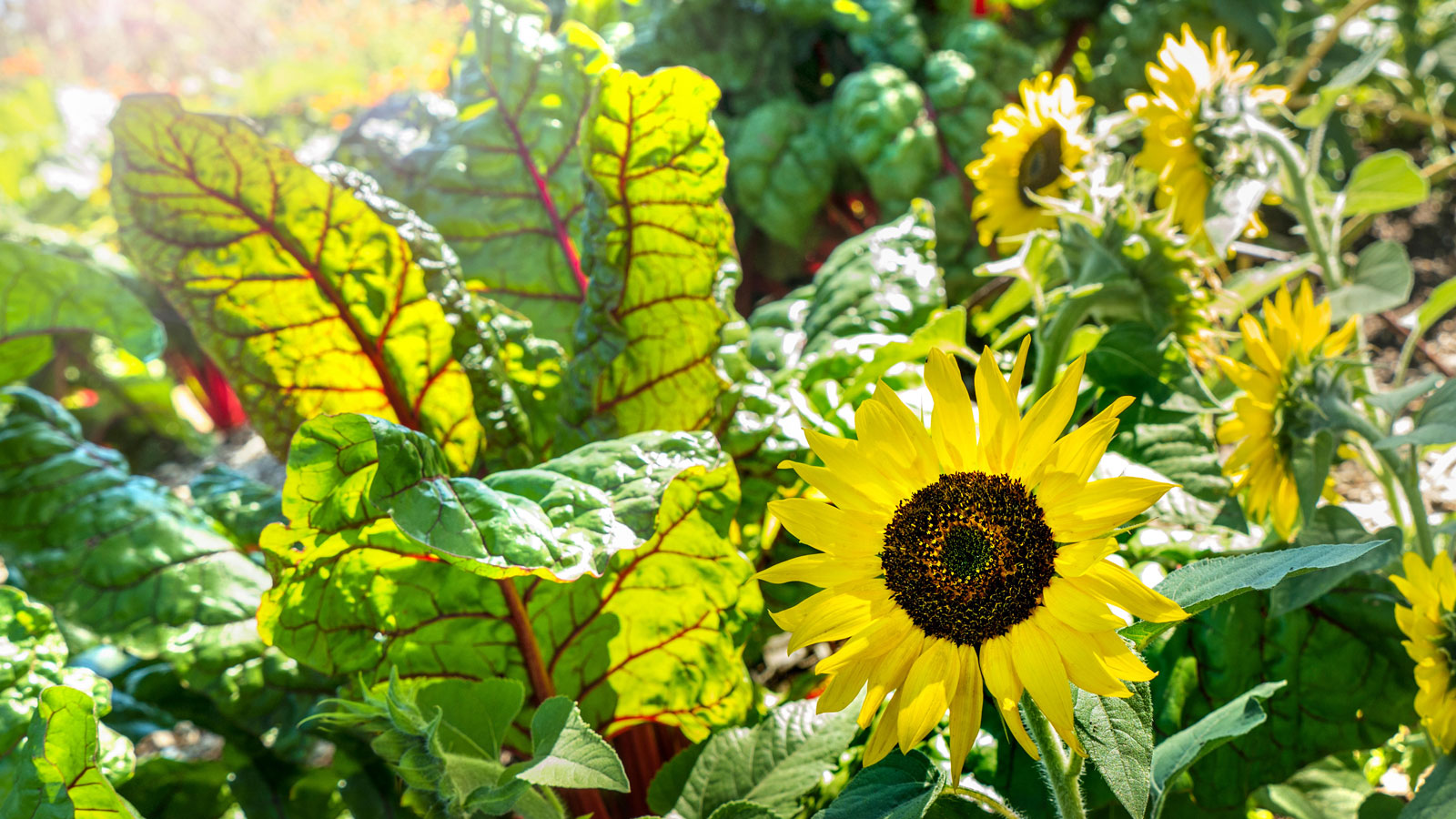
The naturalistic style of chaos gardening lends itself to a more relaxed approach where it's fine to mix ornamental edible plants in with flowers. In fact, it's actively encouraged to get the most out of your planting space by tapping into this mutually beneficial relationship.
The chaos gardening trend takes inspiration from some of the best informal garden designs, including cottage garden ideas, where flowers, herbs and vegetables happily mingle in a carefree way and are free to self-seed and spread around. Out goes planting in neat rows, replaced by a rewilding style approach that's good for biodiversity too.
If you've already chosen the best plants for chaos gardening and want to take things up a level, we have identified seven of the best edible plants for chaos gardening. The good news is they're all easy to grow and look stunning together, too.
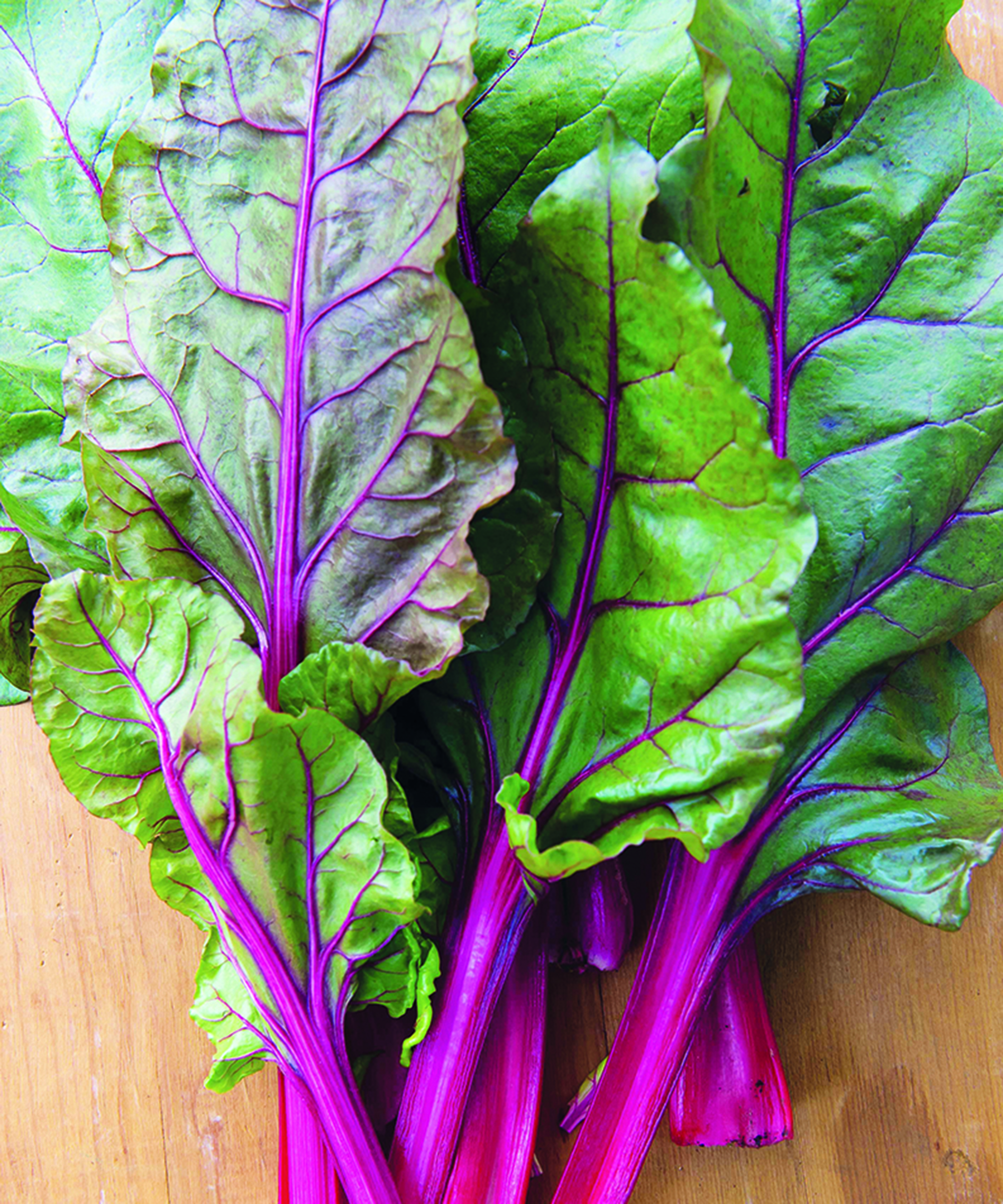
7 of the best edible plants for chaos gardening
The joy of chaos gardening is that you let nature take the lead and learn to have a more relaxed approach to your plot.
Edible plant ideas for chaos gardening can be as easy as scattering a mix of seeds where you want them to grow, then simply letting whatever grows set seed of its own accord. Here are some of the standout choices that work every time.
1. Yarrow
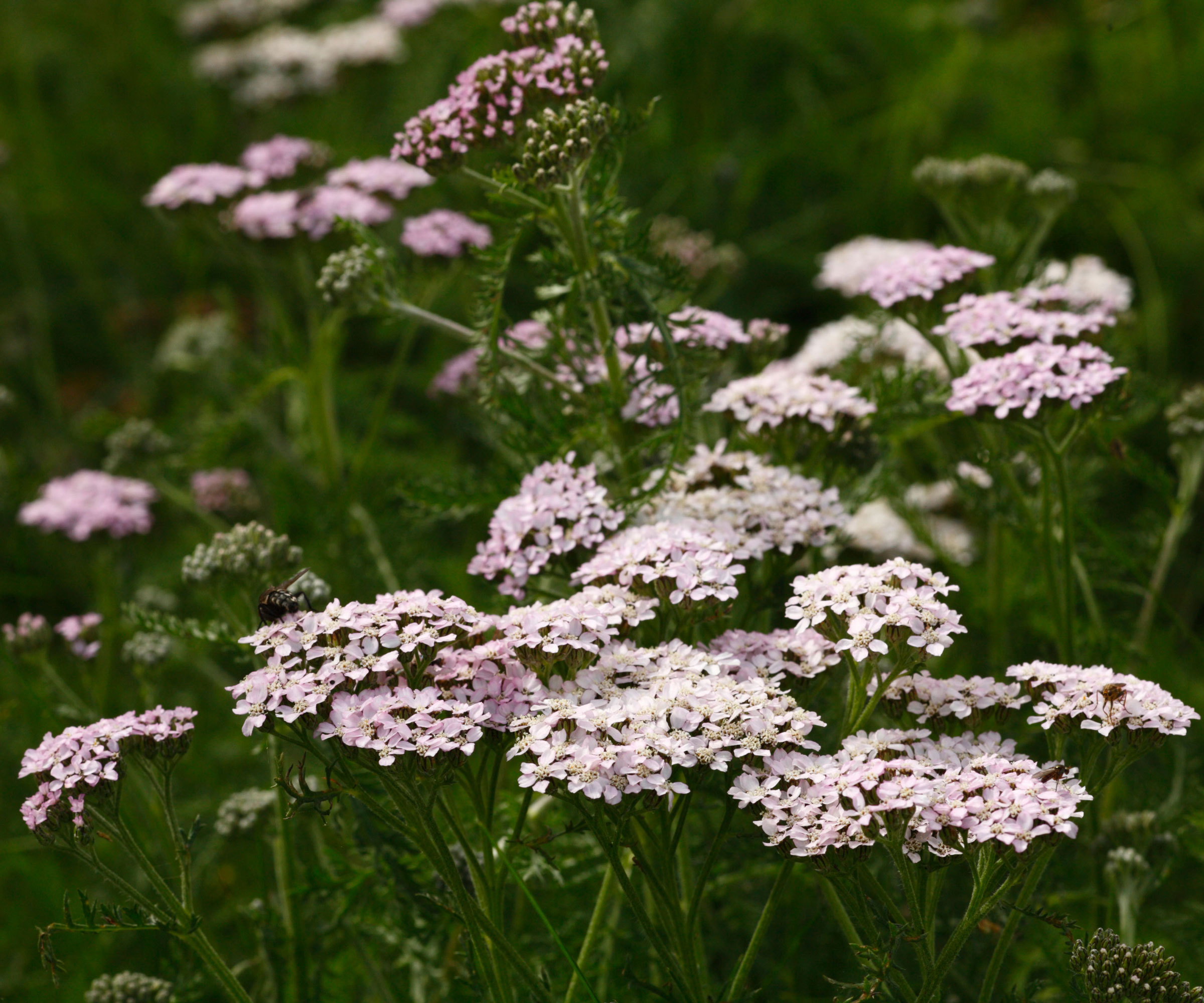
Yarrow is one of the best edible plants for chaos gardening. 'It forms a cloud of color and its vibrant blooms seem to just float above your garden,' says garden designer Laura Janney. 'It also adds beautiful texture, blooms in early summer and will keep going until frost. As the flowers fade, simply give it a trim and it will bloom again.'
Widely naturalised in North America, yarrow (Achillea millefolium) grows in zones 3-9. With its feathery leaves and umbellifer-like clusters of small flowers this herbaceous perennial is a real asset to chaos landscaping if you let it grow in naturalistic drifts. The flowers are a source of food for pollinating insects such as bees too.
Finding out how to grow yarrow is easy. 'It needs full sun and well-drained soil,' says Laura. 'It thrives in hot and dry conditions, which makes it a fantastic drought-tolerant plant. The peppery leaves and slight bitter taste makes it a great herb for cooking. The flowers are also edible and make beautiful decorations for cakes.'
2. Lemon balm
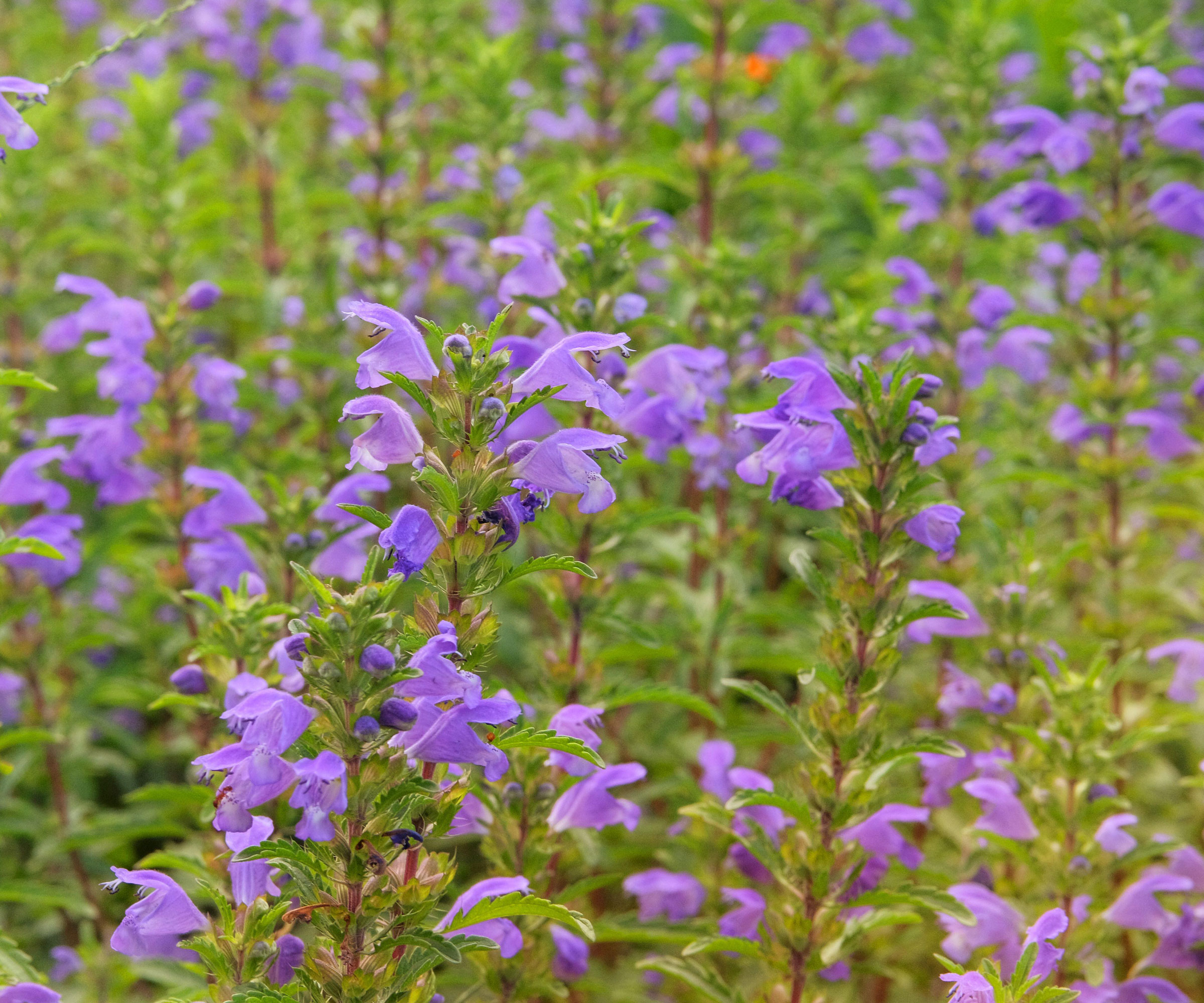
This aromatic plant in the mint family is prized for its medicinal benefits such as promoting relaxation as well as looking pretty in naturalistic plantscaping schemes. With its wonderful lemon-like scent and nectar-filled flowers lemon balm (Melissa officinalis) is one of the best plants for pollinators too.
'If you want to fill up space and have an edible herb, this is a great choice,' says Laura. 'You can eat nearly the whole plant but the most flavorful are the tender leaves, which have a subtle lemon flavor with slight undertones of sweetness and mint. It's wonderful for making teas as it is known for calming anxiety. It's also a great addition to cocktails and salads.'
This is one of the easiest plants to grow, tolerating a variety of soil types as long as the soil is well drained. It only needs a few hours sunlight to produce leaves. Depending where you live (lemon balm is hardy in zones 4-9) it's one of the best edible plants for chaos gardening if you're looking for year-round interest.
If you live in a warmer climate, your lemon balm plants may stay green all year round. Whereas if you live in a colder climate, it's one of the best perennials for springing back to life as soon as the weather starts to warm up.
3. Nasturtium
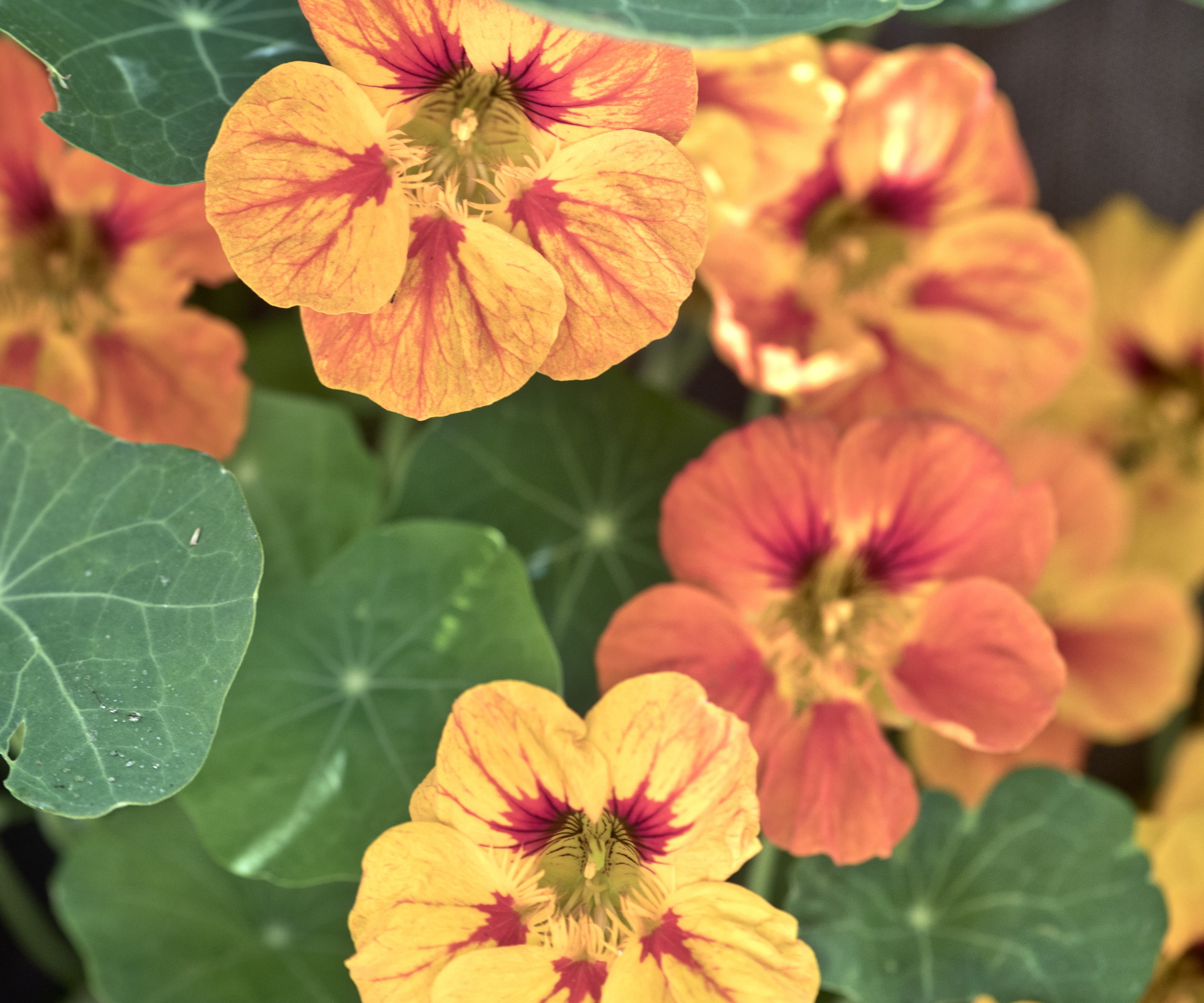
Nasturtium (Tropaeolum) are one of the best edible plants for chaos gardening. They grow naturally in a random way that suits the relaxed approach associated with this style, seeding liberally to spread their beauty around your plot.
When you get the hang of how to harvest nasturtium seeds they'll soon become a staple in your chaos garden planting design.
They are an easy-to-grow, warm-season annual (perennial in zones 9-11) that will thrive in well-drained soil in any sunny garden. Grow them as a groundcover or let them climb up shrubs, trees, or a trellis.
Find out more about how to grow nasturtium and you'll soon discover they are a great companion plant for vegetables too, helping to attract beneficial insects and repelling bad ones.
'Both the large flowers and round leaves of nasturtium are edible, with a distinctly peppery flavor,' says landscape designer Christian Douglas, author of The Food Forward Garden: A complete guide to designing and growing edible landscapes, available from Amazon 'This fast-growing vine drapes beautifully over retaining walls and slopes, and it can tolerate some shade.'
4. Marjoram
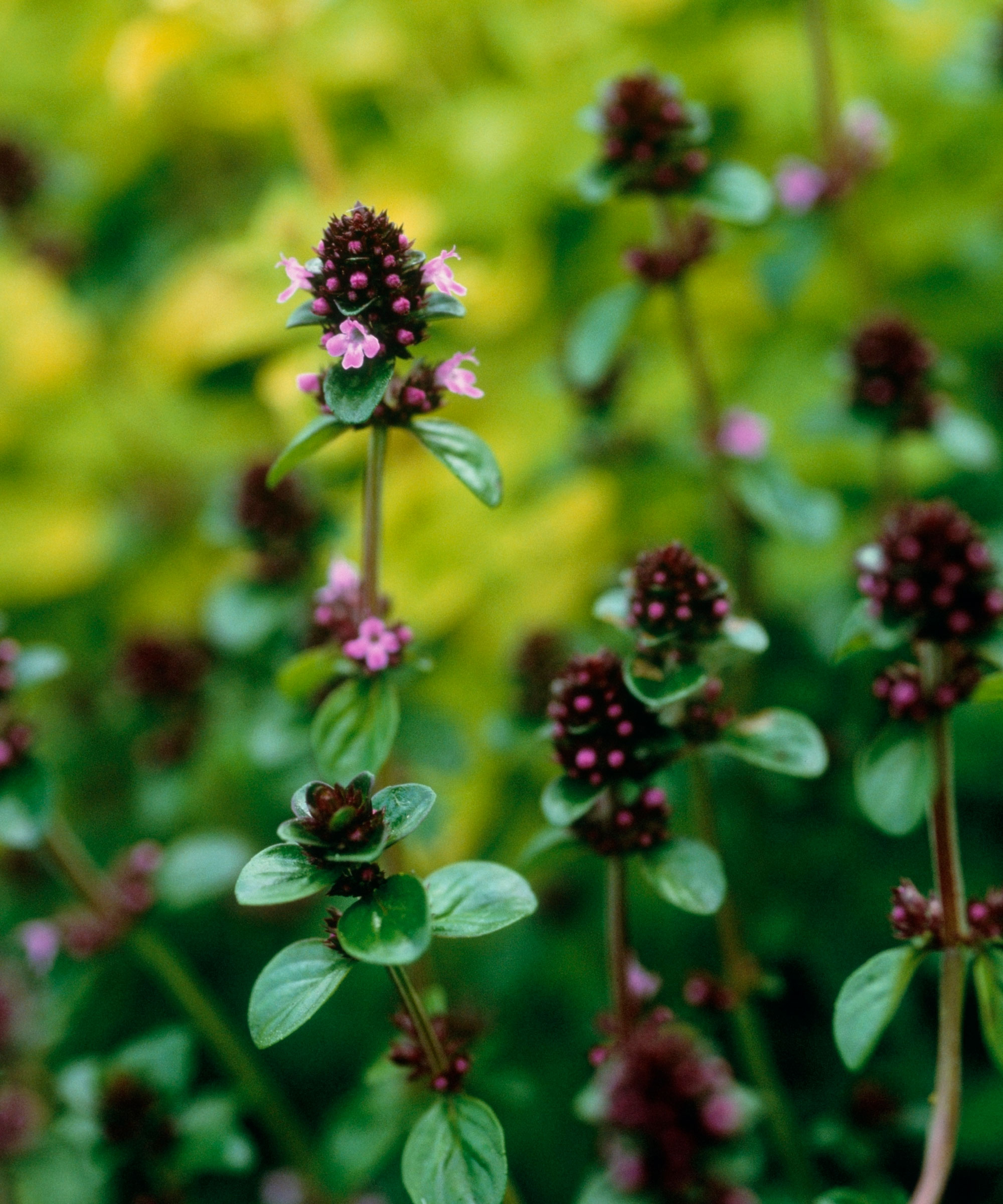
Marjoram (Origanum vulgare) is an easy to grow, sun-loving herb that will make an attractive addition to chaos gardening schemes. This plant is covered in clusters of purple flowers during the summer months, and these – plus the aromatic leaves – will lure bees and butterflies to your garden.
'A subspecies of oregano, marjoram has a milder more delicate flavor and a more upright growth habit,' says Christian. It doesn't spread as aggressively as oregano, yet it tends to flower more often.'
Find out how to grow oregano if you want to know more about the differences between these two herbs.
Plant marjoram in a sheltered sunny spot in free-draining soil. Plants grow into bushy mounds that reach up to 25 inches in height, making them a great choice for informal planting schemes.
Marjoram will self-seed and can be left to spread around. Perennial in USDA zones 9 and 10, marjoram is usually grown as an annual.
5. Anise hyssop
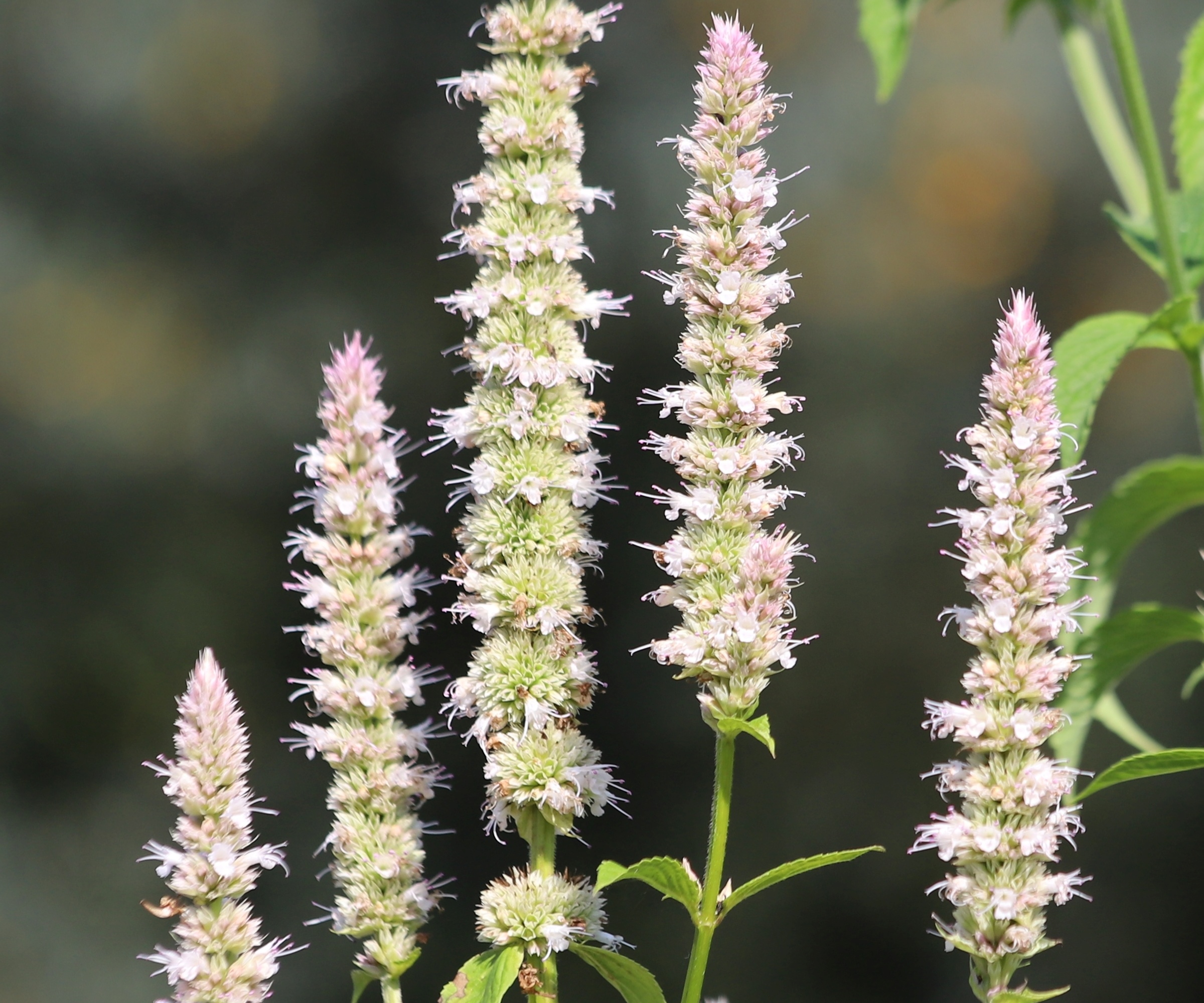
'Another edible flower that's under the radar is anise hyssop (Agastache foeniculum),' says Laura. 'Its pinky-purple hues bring beautiful, cool colors to the chaos garden. It has a taste that is a mix of licorice and mint. Well-known for its medicinal qualities, you can use it in teas as well as salads and other dishes.'
This herbaceous perennial and member of the mint family is native to North America and so easy to grow. It thrives in zones 4-10, and will readily self-seed if left to grow in favorable conditions. Another plus is the flower spikes are loved by bees, butterflies and hummingbirds.
Also known as hummingbird mint, plants can grow up to 4 feet tall and 3 feet wide, and spread underground via rhizomes. Not to be confused with anise, which is a completely different plant family, anise hyssop is an ornamental plant that will elevate any planting scheme but particularly naturalistic chaos gardening designs if you let it spread around freely.
6. Salad leaves
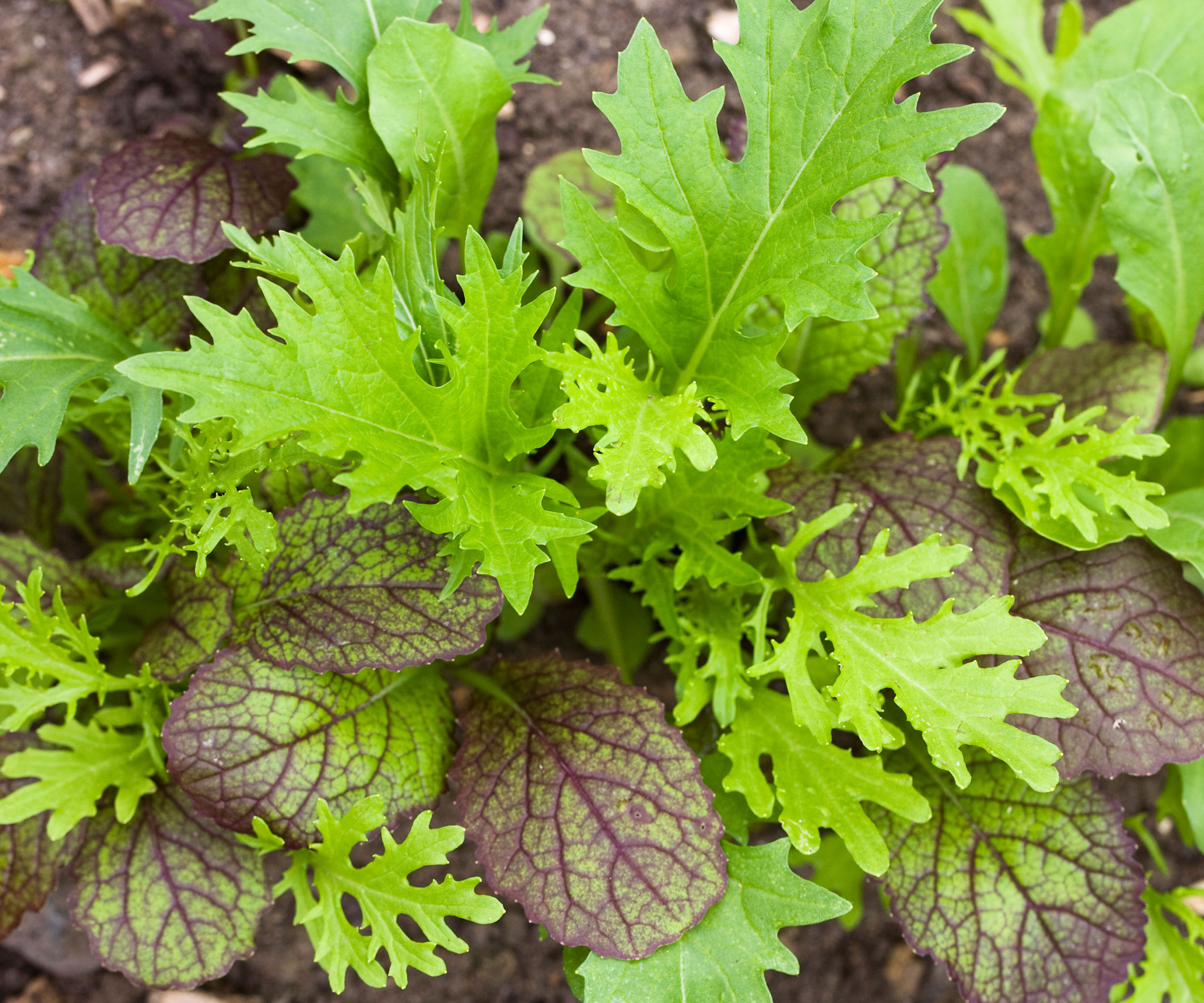
Now for one of my own favorites. I have been growing salad leaves for years but have never mixed up the seeds before planting. I love the idea of buying a few packets of seed and instead of sowing each type individually letting them intermingle.
Select a good mix, such as mustard leaves (try Florida Broad Leaf, available here from Burpee) radish (remember the leaves are super tasty, try 'Salad Rose', available here from Burpee), lettuce and arugula, which are some of the best edible plants for chaos gardening. Alternatively dig out any leftover packets of seed and use these to create your own combo.
Mix the seeds together in a jar, which means you will get a nice combination of contrasting flavors rather than a glut of one type of leaf only, then sprinkle them where you want them to grow. All the seeds will germinate outside without heat in spring, and these leafy lovelies will segue perfectly into your informal planting design as groundcovers.
Sow little and often, and you will always have tender leaves to pick. This is known as the 'cut and come again' method, and will give you a salad bowl of contrasting flavors, colors and textures. Take it up a notch with Asian greens, corn salad, purslane and Malabar spinach, most of which can be sown in early spring for the first crop, and again in late summer for a fall crop to keep your chaos garden productive through the seasons.
7. Garlic chives
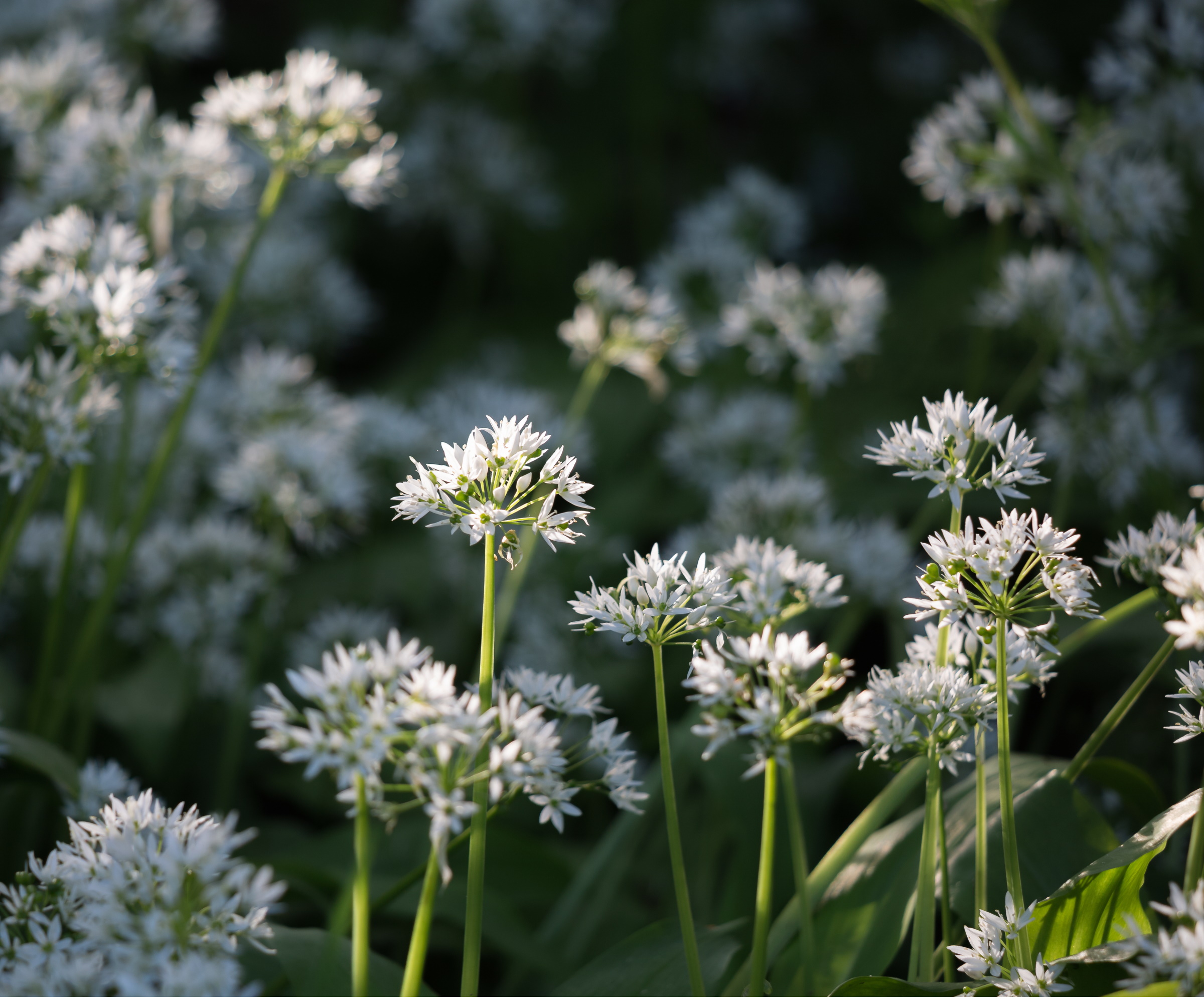
Plant garlic chives and you'll be rewarded with one of the best edible plants for chaos gardening. They give you a supply of easy to use garlic-flavored leaves that are a versatile addition to the kitchen while also looking great in informal borders.
'There is so much to recommend garlic chives in the garden,' says plant expert Christina Chung, author of The Layered Edible Garden, available from Amazon. 'They'll grow happily in a wide range of climates and soils, thriving and blooming in sun or shade, and produce big clouds of white flowers in late summer.'
These provides a valuable nectar source for bees and other beneficial insects, as well as being edible and adding a lovely natural planting detail to chaos gardening designs.
Garlic chives thrive in zones 3-9, and can be sown directly in the garden after last frost. In frost-free areas they can be sown right through winter and into early spring.
If you're keen on edible planting, the trend for forest garden ideas where you grow edible planting in layers to make the most of your space, might be of interest. It's a clever way to add more vegetables, herbs and fruit into your garden, as well being an important way to boost biodiversity.







